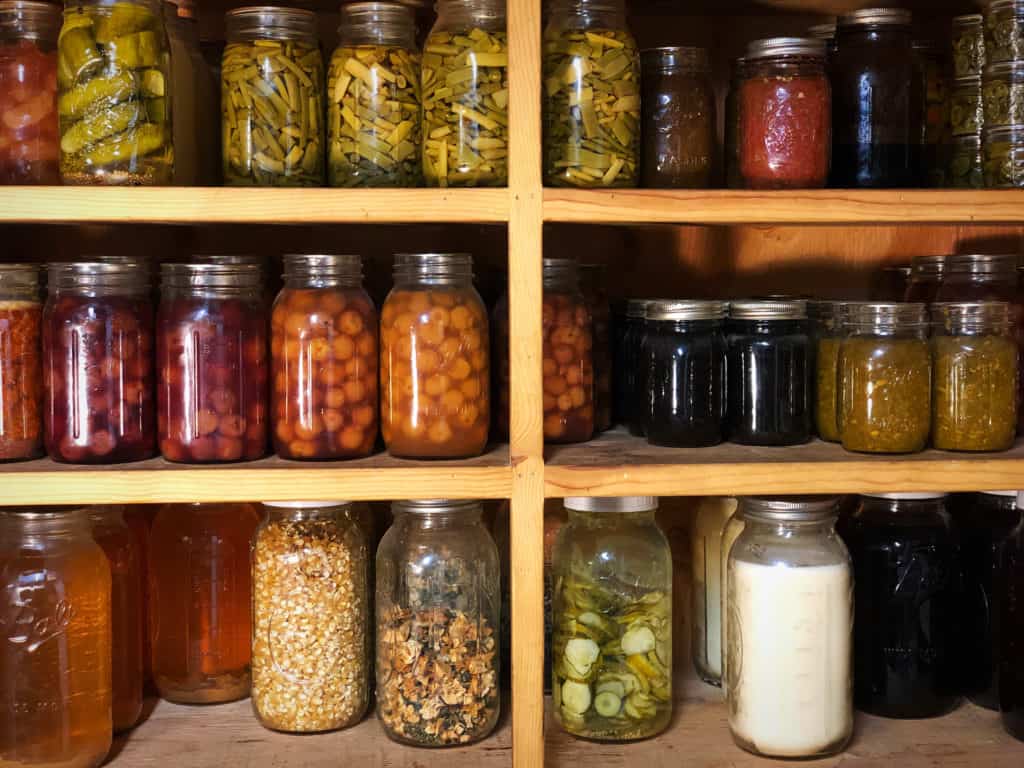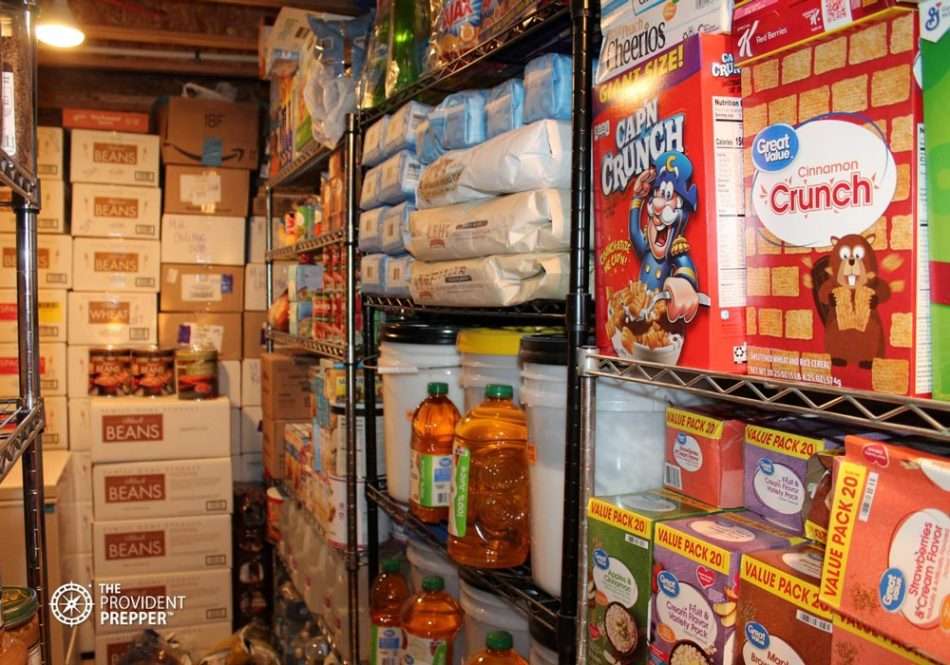In this article, you will discover various long-term food storage options that you can consider for off-grid living or any situation where you need to store food for an extended period. We will explore what types of food can be stored for a long time, ensuring you have an understanding of the options available to you. So, whether you’re preparing for an emergency or looking to stock up for the future, this article will provide you with valuable insights on long-term food storage.
Long-term Food Storage Options
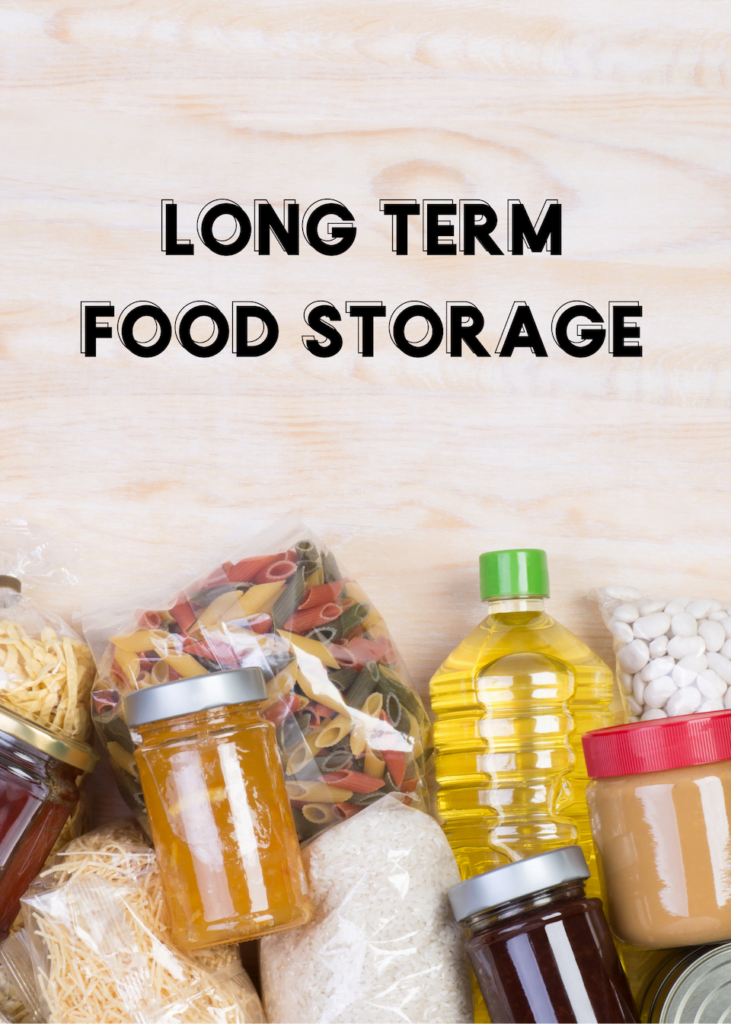
Introduction to Long-term Food Storage
In today’s uncertain world, it is essential to be prepared for any situation that may arise. One crucial aspect of preparedness is long-term food storage. Whether you are concerned about natural disasters, economic instability, or off-grid living, having a sufficient supply of food that can last for an extended period can provide peace of mind and security. In this article, we will explore the benefits of long-term food storage, important factors to consider, and various types of long-term food storage options available to you.
Benefits of Long-term Food Storage
Emergency Preparedness
When unexpected events occur, such as severe weather conditions or power outages, having a stockpile of food can be a lifeline. In times of crisis, access to grocery stores may be limited or completely unavailable. Long-term food storage ensures that you have the necessary sustenance to survive until normalcy is restored.
Cost Savings
Long-term food storage allows you to take advantage of bulk purchases and discounted prices. By buying in large quantities, you can save money in the long run by avoiding price hikes and inflation. Additionally, by reducing your dependence on frequent grocery shopping, you can save on transportation costs and impulse purchases.
Convenience
Having a well-stocked pantry eliminates the need for frequent trips to the grocery store. Long-term food storage allows you to have a wide variety of food options readily available, making meal planning and preparation much more convenient. Moreover, having your preferred foods on hand can provide a sense of comfort and familiarity during uncertain times.
Peace of Mind
Knowing that you have a reliable food supply gives you peace of mind and reduces anxiety about potential food shortages. Long-term food storage allows you to be self-reliant and less dependent on external resources. You can rest assured that you and your loved ones will be well-nourished even in times of crisis.
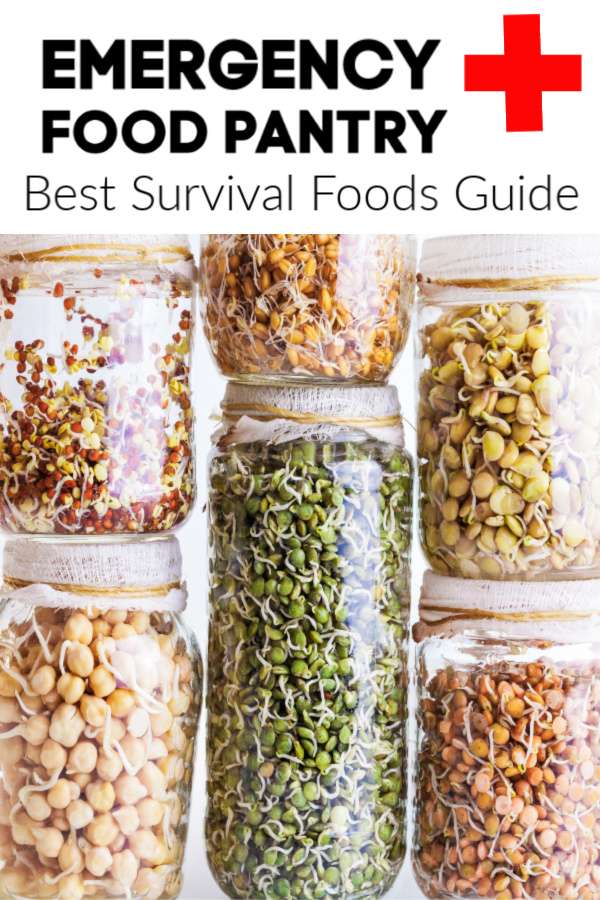
Factors to Consider for Long-term Food Storage
Before diving into the various long-term food storage options, it is crucial to consider several important factors that will impact your decision-making process.
Shelf Life
When choosing foods for long-term storage, pay close attention to their shelf life. Opt for items that have a long shelf life without compromising their nutritional value. Some foods can last for several years, while others may spoil relatively quickly. Understanding the shelf life of different foods will help you plan your storage and rotation strategies effectively.
Nutritional Value
The nutritional content of your stored food is of utmost importance. Ensure that you have a balanced and diverse supply of nutrients to sustain your health over an extended period. Consider stockpiling foods rich in protein, carbohydrates, healthy fats, vitamins, and minerals. Including a variety of food groups will help you maintain a well-rounded diet.
Storage Space
Evaluate the available storage space you have for your long-term food supply. Whether it’s a cellar, basement, pantry, or dedicated storage area, make sure you have enough room to accommodate your stockpile. Consider utilizing vertical storage options and maximizing your available space efficiently.
Accessibility
Easy access to your stored food is crucial during times of need. Ensure that your long-term food storage area is conveniently located and well-organized. Regularly rotate your stock by using the oldest items first and replenishing your supply accordingly. This practice will help prevent food waste and ensure that your stored food remains fresh.
Rotating Stock
To maintain the quality and nutritional value of your stored food, adhere to a strict rotation schedule. Use a first-in, first-out (FIFO) method where the oldest items are consumed or replaced first. Regularly inspect your stockpile for any signs of spoilage, and discard any expired or damaged items.
Temperature and Environment
Proper temperature and environment play a significant role in preserving your long-term food storage. Most foods require cool, dry, and dark conditions to maintain their quality. Avoid storing food in areas prone to extreme temperatures, humidity, direct sunlight, or pest infestations.
Packaging and Preservation Methods
Investing in appropriate packaging and preservation methods is vital for long-term food storage. Vacuum-sealed bags, mylar bags, food-grade buckets, or canning jars are popular options for preserving food and extending its shelf life. Research and select packaging materials that are suitable for the specific types of food you plan to store.
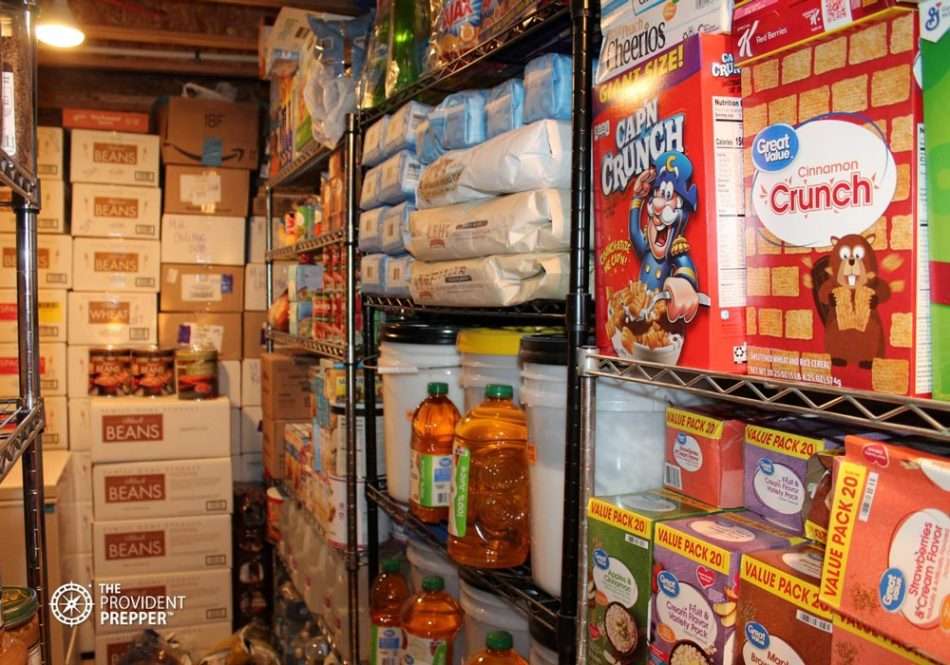
Types of Long-term Food Storage Options
Now that we have discussed the essential factors to consider let’s explore some common long-term food storage options available to you.
Canned Foods
Canned foods are a popular choice for long-term food storage due to their extended shelf life and convenience. They undergo a canning process that involves sealing food in airtight containers, preserving their freshness and taste. Canned foods can last anywhere from two to five years or even longer, depending on the product.
Dehydrated Foods
Dehydrating food involves removing its moisture content, which significantly extends its shelf life. Dehydrated foods are lightweight and easy to store, making them an excellent option for long-term food storage. They retain most of their nutritional value and can last several years when properly stored.
Freeze-dried Foods
Freeze-drying is a preservation process that removes water from food while retaining its flavor, texture, and nutritional value. Freeze-dried foods have an exceptionally long shelf life and are lightweight, making them ideal for emergency situations or off-grid living. They can last for up to 25 years when stored correctly.
MREs (Meals Ready to Eat)
MREs are individual, self-contained meals specifically designed for military personnel but are also utilized by emergency preparedness enthusiasts. These meals are complete and require no additional preparation. MREs have a long shelf life and are suitable for on-the-go situations, but they can be more expensive compared to other options.
Bulk Food Purchases
Buying in bulk is a cost-effective way to stock up on essential food items. It allows you to take advantage of lower prices and discounts. Common bulk food purchases include rice, pasta, beans, oats, flour, and canned goods. Ensure proper storage in a cool, dry place to maintain freshness.
Root Cellars
Root cellars are natural or man-made underground storage areas that provide a cool and humid environment. They are ideal for storing root vegetables, fruits, and certain other produce items. Root cellars allow you to extend the shelf life of fresh produce while maintaining their nutritional value.
Vacuum Sealing
Vacuum sealing involves removing the air from food packaging to prevent spoilage and preserve freshness. It extends the shelf life of various foods, including meats, fruits, vegetables, and even leftovers. Vacuum-sealed food can be stored in a cool, dark place or in the freezer for long-term storage.
Fermentation and Pickling
Fermentation and pickling are traditional methods of preserving food that have been practiced for centuries. They involve the preservation of food in salty or acidic solutions, promoting the growth of beneficial bacteria and inhibiting the growth of harmful microorganisms. Fermented and pickled foods can last for months or even years.
Canning and Preserving
Canning and preserving involve processing food in jars or cans and sealing them to create an airtight environment. By heating the jars to kill bacteria and other organisms, the food can be safely stored for years. This method is commonly used for fruits, vegetables, sauces, and jams.
Mylar Bags
Mylar bags are a popular option for long-term food storage due to their superior oxygen and moisture barrier properties. They can be heat-sealed and provide an excellent protective layer for a variety of food items. Mylar bags, combined with oxygen absorbers, can extend the shelf life of stored food for several years.
Food Storage Containers
Food storage containers, such as food-grade buckets or plastic containers, are suitable for storing dry goods like grains, cereals, and flour. They offer convenience and easy access to food items while keeping them fresh and protected from pests or moisture.
Freezing
Freezing is an effective method for preserving certain types of food for long periods. Meats, fruits, vegetables, and prepared meals can be frozen to extend their shelf life. However, it is important to note that freezing may compromise the texture and quality of some foods.
Smoking and Drying
Smoking and drying are traditional methods used to preserve meats, fish, and other perishable foods. By smoking or drying, moisture is removed, making it difficult for bacteria to grow. This method enhances the flavor and texture of the preserved food and can provide a tasty addition to your long-term food storage.
Seeds for Future Cultivation
While not directly applicable for immediate consumption, storing seeds for future cultivation is a wise investment for long-term food security. These seeds can be used to grow fruits, vegetables, and grains, allowing you to become self-sustainable and produce your food supply.
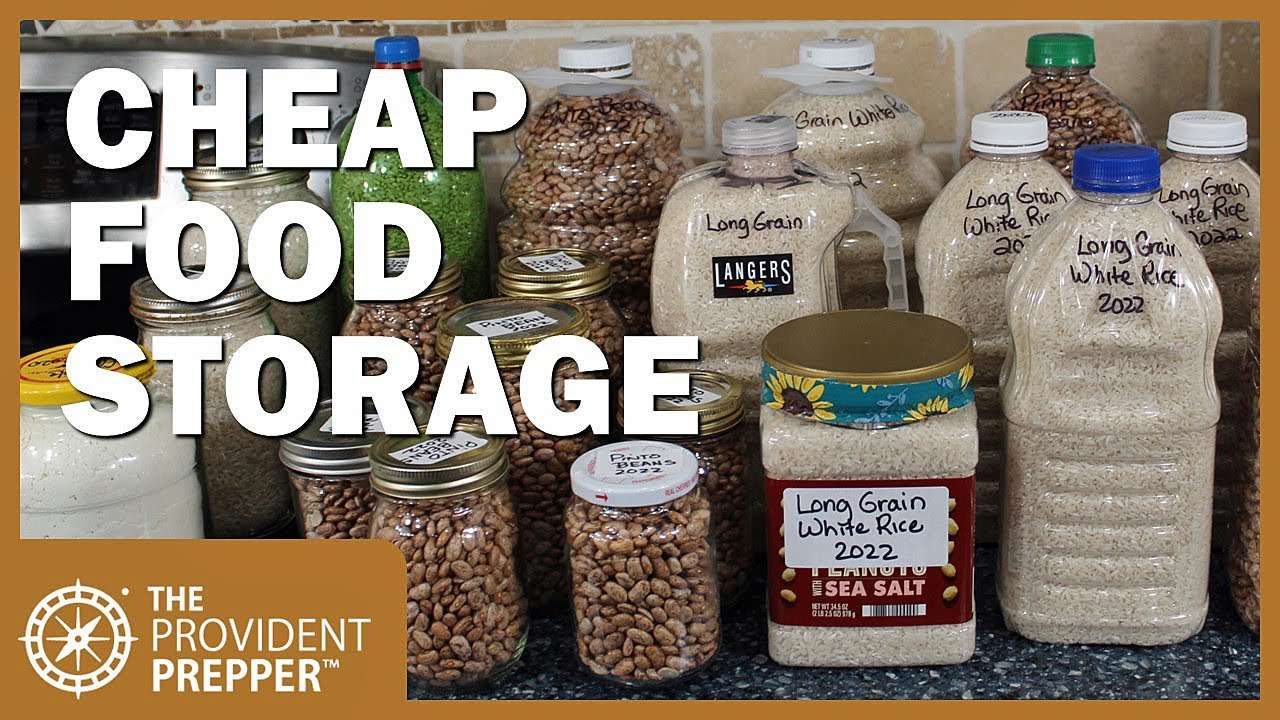
Conclusion
In conclusion, long-term food storage is an essential aspect of preparedness in uncertain times. By considering factors such as shelf life, nutritional value, storage space, accessibility, rotation, temperature, and packaging, you can make informed decisions about the types of food you store and the methods you employ.
With a wide range of long-term food storage options available, such as canned foods, dehydrated foods, freeze-dried foods, MREs, bulk food purchases, root cellars, vacuum sealing, fermentation, canning, and more, you have the flexibility to create a customized plan that suits your needs and preferences.
Remember, being prepared for the unexpected brings peace of mind and ensures the well-being of yourself and your loved ones. By investing time and resources into long-term food storage, you are taking an important step towards self-reliance and resilience in the face of uncertainty. Stay prepared, stay safe, and be well-nourished, no matter what challenges lie ahead.
